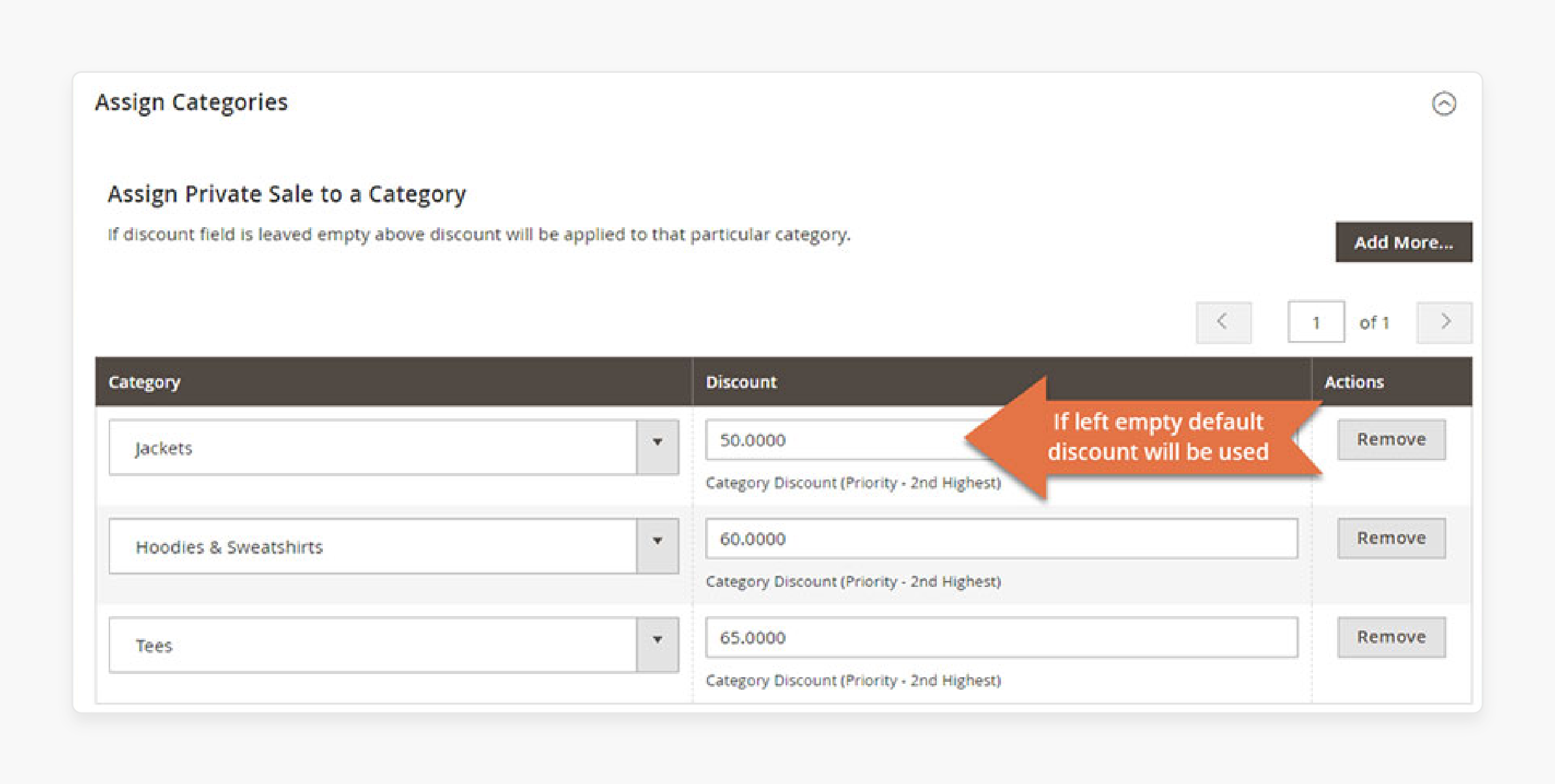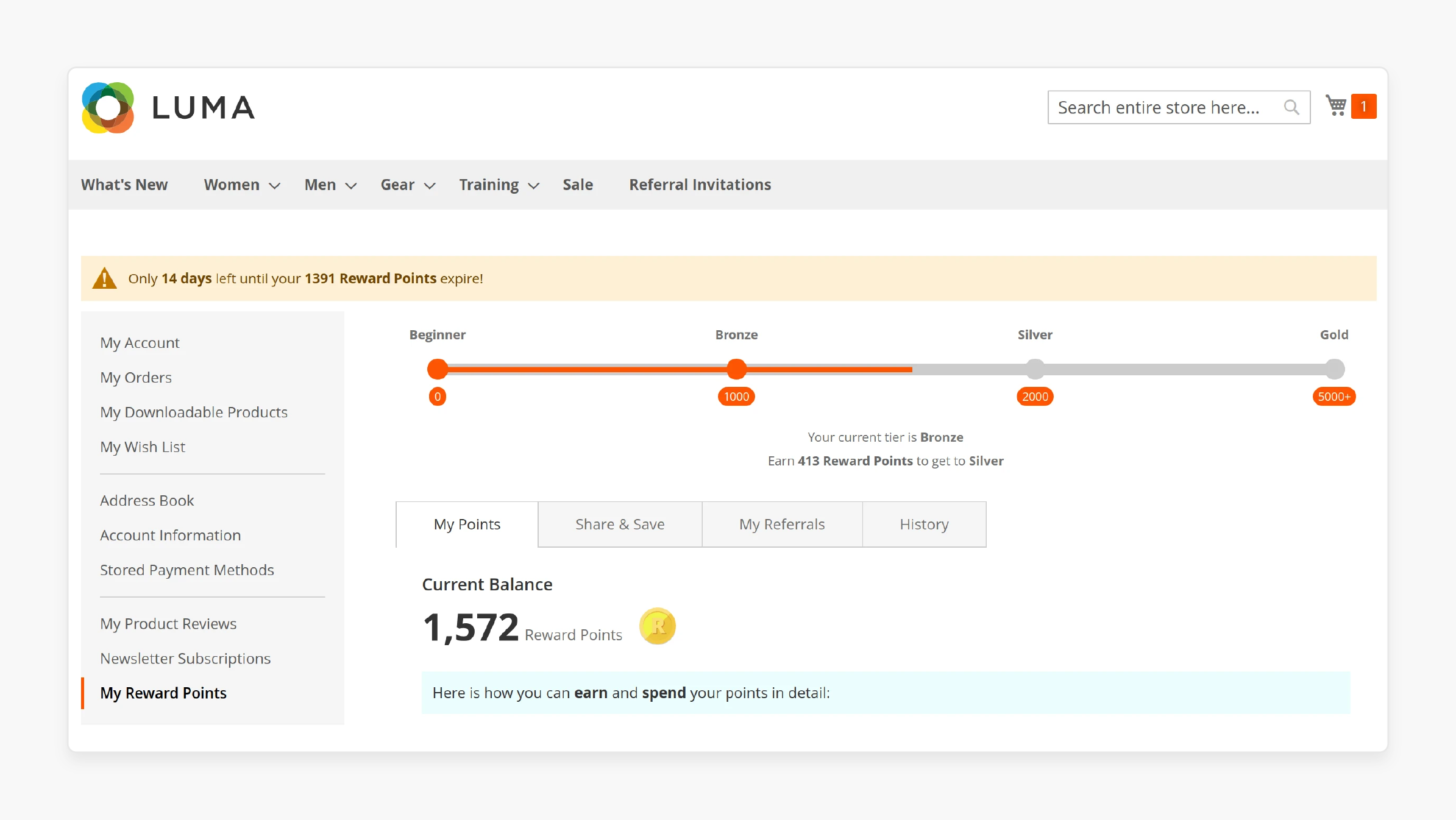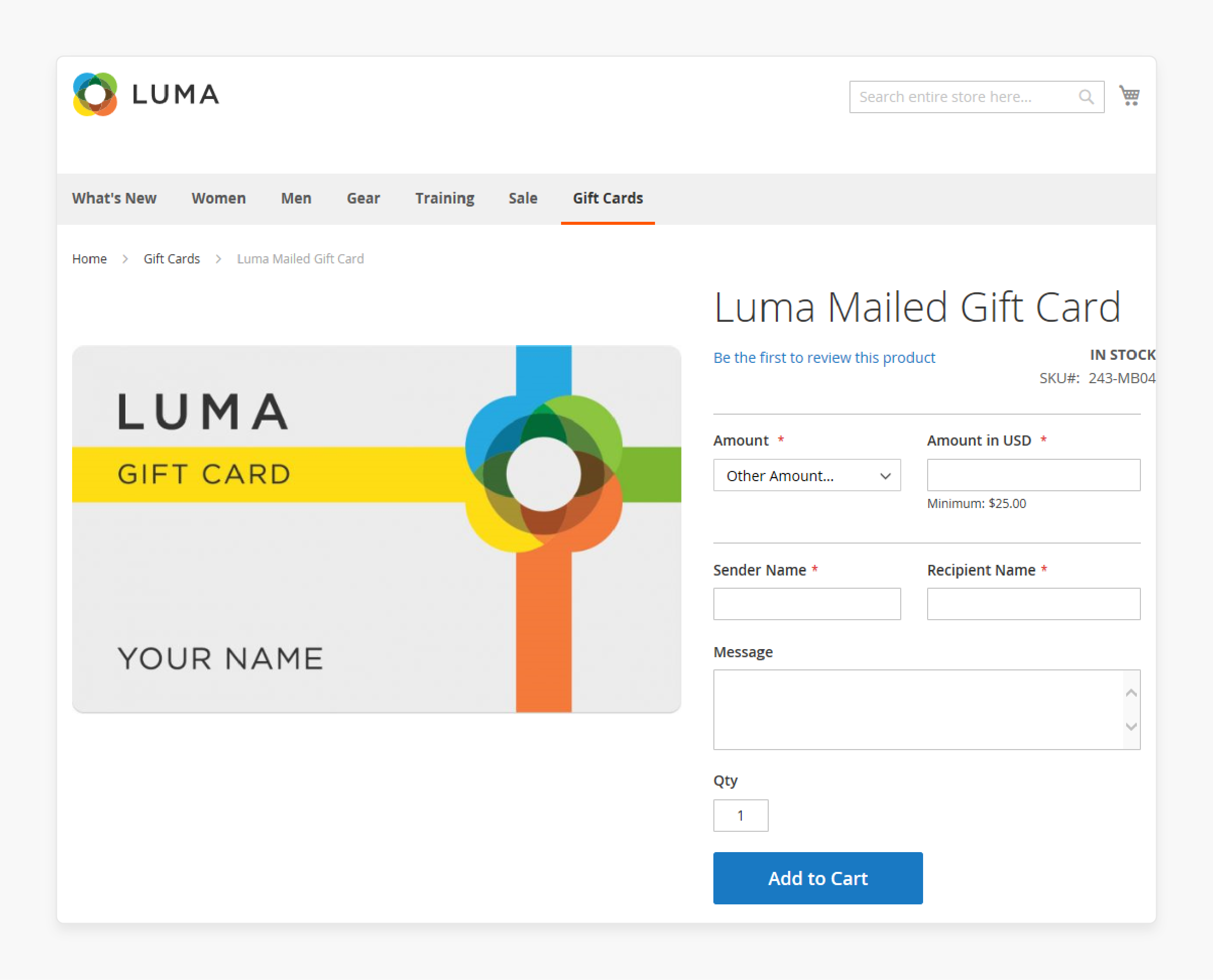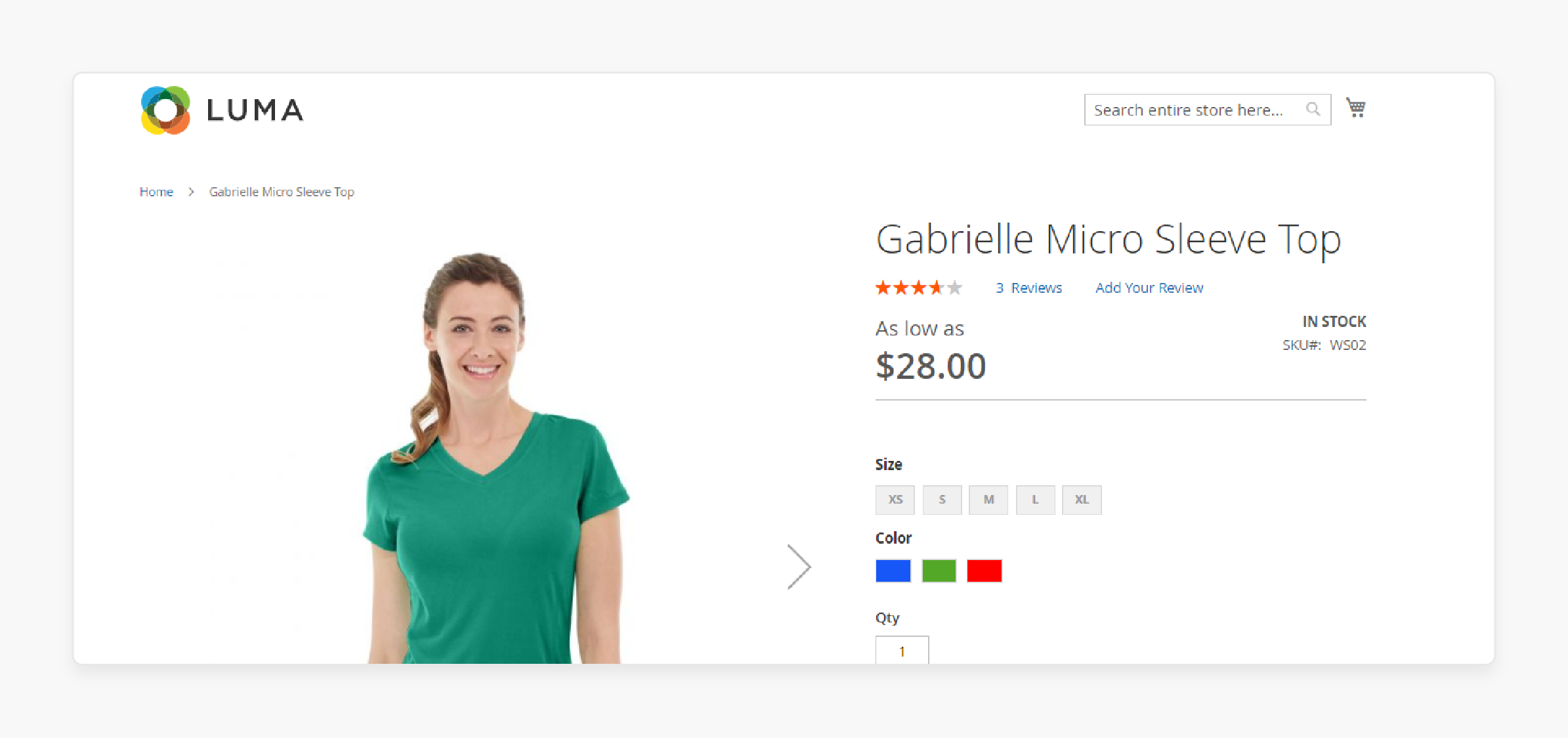
Streamline Magento Design For Magento 2 Ecommerce Store
Are you ready to enhance your Magento 2 ecommerce store? Magento design is important for success. It creates an engaging and user-friendly shopping experience. By optimizing the design elements, you boost usability and aesthetics. It enhances overall customer satisfaction.
This article will explain how to streamline your Magento design process. We'll discuss integrating effective design principles.
Key Takeaways
-
How to simplify the Magento design process?
-
Learn to apply effective design principles for better user engagement.
-
How to enhance the visual appeal and functionality of your store?
-
Optimize your Magento 2 ecommerce store's usability and aesthetics.
What are Magento Design Themes and Templates?
Magento Design Themes and Templates are essential components of the Magento ecommerce platform.
Magento Design defines the visual appearance and user experience of a Magento website. Themes control the layout, colors, and overall design of an online store. Templates are specific page layouts within a theme designed for optimal UX.
Magento themes provide a consistent look and feel across an ecommerce store. They ensure a cohesive brand identity throughout the shopping experience. It enhances the overall ecommerce design. Themes can be customized to match a company's unique style and requirements, or enhanced further with a graphic design subscription for ongoing visual improvements.
Templates in Magento are individual page layouts. They enhance the overall design and development. They determine how content is displayed on specific pages. Examples include product pages or category listings. Templates allow for flexibility in presenting different types of information. This flexibility is particularly effective in Adobe Commerce.
The Magento platform offers both pre-built and custom theme options. Pre-built themes provide a quick start for new stores. Custom themes allow for more extensive personalization and unique designs. Many businesses opt for custom themes to stand out in the competitive ecommerce landscape.
Key Features of Magento Design
| Feature | Description | Benefits |
|---|---|---|
| Meta Tags | Customizable meta titles and descriptions for product and catalog pages | - Improves visibility in search results<br>- Increases click-through rates<br>- Helps with keyword targeting |
| SEO-Friendly URLs | Clean, readable URLs for products and categories | - Easier for search engines to index<br>- More appealing to users<br>- Improves organic traffic |
| Image Optimization | Tools for adding alt text and compressing images | - Improves page load speed, enhancing the overall customer experience<br>- Provides context for search engines with best practices<br>- Enhances user experience through effective customization |
| Canonical Tags | Automatically generated for pages with multiple URLs | - Prevents duplicate content issues<br>- Consolidates ranking signals |
| Robots.txt and Metarobots | Control over search engine access to pages | - Focuses crawling on important pages for better analytics<br>- Manages crawl budget effectively to enhance customer experience |
| HTML and XML Sitemaps | Automatically generated site structure maps | - Helps search engines understand site structure<br>- Ensures important pages are indexed |
| Rich Snippets | Support for Schema.org markup in Magento 2 improves the shopping cart experience. | - Enables rich snippets in search results<br>- Potentially increases click-through rates |
| Responsive Design | Ensures proper display across devices. It is essential for effective ecommerce design in Magento. | - Improves mobile user experience<br>- Positively impacts search rankings |
| Custom Theme Development | Allows for unique store designs | - Enhances brand identity<br>- Improves user engagement |
| Integration Capabilities | Supports various third-party integrations | - Enhances functionality<br>- Improves overall store performance |
| Content Management System | Built-in CMS for easy content updates | - Simplifies content management<br>- Improves SEO through fresh content |
| Performance Optimization | Tools for improving site speed and performance can significantly impact your Magento web design. | - Enhances user experience<br>- Positively impacts search rankings |
4 Magento Design Tips for Unique Content
1. Avoiding Duplicate Content Issues
Duplicate content can negatively impact search engine rankings and user experience. To address this in Magento:
-
Create unique product descriptions for each item.
-
Use canonical tags to indicate preferred versions of pages.
-
Implement proper URL structure to avoid multiple paths to the same content.
These practices help search engines understand the primary content. They improve overall site performance. It is particularly important in Magento web development.
2. Using Canonical Tags Effectively
Canonical tags are important for managing duplicate content. In Magento:
-
Set canonical tags for product pages with multiple URLs.
-
Use them for category pages with different sorting or filtering options.
-
Ensure consistent implementation across the site.
Proper use of canonical tags consolidates ranking signals. It also clarifies the content hierarchy for search engines.
3. No-Indexing Sorted and Filtered Pages
To prevent search engines from indexing less important pages:
-
Apply no-index tags to pages with applied filters or sorting
-
Use robots.txt to control the crawling of these pages
-
Implement proper pagination for category pages
This approach focuses search engine attention on primary content pages. It improves overall site SEO.
4. Creating Landing Pages with Applied Filters and Sorting Options
Develop targeted landing pages for popular search queries:
-
Create custom pages for frequently used filter combinations. It will enhance the shopping cart functionality.
-
Optimize these pages with unique content and relevant keywords to enhance the Magento web design.
-
Ensure these pages are easily accessible from the navigation menus.
What Comprises the Magento Design Checklist?
1. Technical SEO Audit
-
Evaluate website performance and loading speed to improve the Magento web design.
-
Check for mobile responsiveness in your Magento website development. Ensure optimal viewing on various devices. It will improve user experience across different screen sizes.
-
Assess site architecture and crawlability.
-
Verify proper implementation of SSL certificates.
2. Analyzing Competitors
-
Identify top-performing competitors in your niche.
-
Examine their website structure and content strategy.
-
Analyze their product presentation and user experience.
-
Identify opportunities for differentiation and improvement in design and development.
3. Managing URLs and Metadata
-
Implement SEO-friendly URL structures to improve the visibility of your Magento website development.
-
Optimize title tags and meta descriptions for products and categories.
-
Use relevant keywords in URLs and metadata. Ensure consistency across all pages.
4. Improving Navigation and Internal Linking
-
Create a logical and user-friendly site structure.
-
Implement clear and descriptive navigation menus. It will enhance user experience. Focus on your custom Magento projects.
-
Use breadcrumbs for improved user orientation.
-
Enhance internal linking between related products and categories.
5. Avoiding Duplicate Content
-
Create unique product descriptions and category content.
-
Implement canonical tags for similar pages.
-
Use rel="next" and rel="prev" for paginated content.
-
Properly handle parameter-based URLs.
6. Enhancing Product Snippets and Cross-Links
-
Implement structured data markup for rich snippets.
-
Optimize product images with alt tags and descriptive file names.
-
Create compelling product descriptions with relevant keywords.
-
Implement related products and cross-selling features.
Magento Design Features for Optimizing Ecommerce Stores
1. Dynamic Blocks
-
Dynamic Blocks in Magento let you show different content to different people. They are equivalent to ‘smart signs’ in your online store that change based on who looks at them.
-
They act as your online store’s shop assistant. You can set dynamic blocks to show the latest deals.
-
They can also suggest products or inform shoppers about an upcoming sale. You can use conditions to define what appears in a Dynamic Block.
-
You can create dynamic blocks based on various factors. These include where the shopper comes from and what they have bought before.
-
You can also create blocks based on whether they are new to your site. The process ensures that your store provides a personalized experience for each visitor.
2. Gift Registries

-
Magento gift registries provide a unique way to boost sales. They also offer an engaging shopping experience to your customers. This feature allows setting wish lists for weddings, birthdays, or any special occasion.
-
Gift registries are useful for several reasons. They help customers share their favorite items with others easily.
-
When someone sets up a registry, it invites others to shop. It eliminates the need to guess what the other person wants.
-
Magento gift registry corresponds to more sales in online stores. It also makes the gifting process easier for your customers.
3. Private Sales & Events

-
Private sales and events allow select shoppers to be invited to exclusive sales. It helps create a sense of urgency around your products. Such events can boost conversion rates. They tap into purchase behavior that thrives on exclusivity.
-
Private sales are not just about making customers feel special. They also allow you to give more attention to what each shopper likes.
-
By segmenting your customers, you can show them detailed product information. You can also provide comparison tools that match their interests.
-
It increases the chances of the sale. It also helps build loyalty. Customers know you understand their needs.
4. Rewards & Loyalty Programmes

-
Magento's rewards and loyalty tools are powerful features. They ensure repeat customers in your Magento store.
-
By setting up a program, you give shoppers reasons to return. You can offer points for each purchase.
-
Customers can use these points for discounts or special items later. It adds value to your customers' buying journey.
-
Building a strong loyalty program can turn one-time buyers into loyal customers. These loyal customers create brand awareness through word-of-mouth. They also help your store grow.
5. Gift Cards

-
Magento gift cards are a powerful tool for online store owners. They can boost customer loyalty and popularize your online shop.
-
Gift cards aren't just for the holiday season; they work all year. You can grow your sales by using smart ways to offer them.
-
Try making customers earn them. Or ask friends to shop with you.
Magento Design Challenges and Solutions
1. Addressing Slow Loading Speed
Slow loading speed is a common challenge for Magento stores. It can negatively impact user experience and search engine rankings. To address this issue:
-
Optimize images by compressing them and using appropriate formats.
-
Implement caching mechanisms to reduce server load and enhance the performance of your Magento web design.
-
Minimize the use of unnecessary extensions and custom code.
-
Consider using a content delivery network (CDN) for faster content delivery.
These solutions can significantly improve page load times. It aligns with best practices for UX. Faster loading speeds enhance user satisfaction. They can also lead to higher conversion rates. It benefits the checkout process.
2. Avoiding Keyword Stuffing and Irrelevant Keywords
Proper keyword usage is important for Magento SEO and for improving Magento website design. Keyword stuffing can harm search rankings and negatively impact customer experience. To avoid this:
-
Conduct thorough keyword research to identify relevant terms.
-
Use keywords naturally in product descriptions and category content.
-
Focus on long-tail keywords that match user intent.
-
Regularly review and update keyword strategies based on performance data.
This approach helps create more valuable content for users. It also improves search engine visibility without risking penalties.
3. Optimizing Product Titles and Tags

Effective product titles and tags are essential for Magento stores. They impact both user experience and search performance. To optimize your Magento web design, focus on user experience and site performance.
-
Create clear, descriptive product titles that include relevant keywords.
-
Use alt tags for product images to provide context for search engines.
-
Implement structured data markup for rich snippets in search results.
-
Ensure consistency in naming conventions across the site.
These practices enhance product discoverability. They also improve the overall user experience in the Magento storefront.
4. Hiring Experienced Magento Developers and SEO Specialists
Complex Magento design challenges often require expert knowledge. Consider:
-
Partnering with a certified Magento development company.
-
Engaging SEO specialists with ecommerce experience.
-
Investing in ongoing training for your in-house development team.
-
Utilizing Magento's official resources and community support.
Experienced professionals can provide tailored solutions for Magento support and development services. They can address specific challenges faced by your Magento store. This expertise can lead to improved performance and business growth.
FAQs
1. What are the benefits of Magento website design services for my ecommerce store?
Magento website design services offer numerous benefits for your ecommerce store. These include customized UI design, improved user experience, and enhanced brand identity. Professional Magento designers can create a visually appealing and functional online store. This store aligns with your business goals. It makes it easier for customers to find what they're looking for.
2. What Magento development services are essential for a successful ecommerce website?
Essential Magento development services are necessary for a successful ecommerce website. These include custom theme development, extension integration, performance optimization, and security enhancements. A skilled Magento development team can tailor these services to meet your specific business needs. It ensures your online store stands out in the competitive ecommerce landscape.
3. What are the advantages of using Magento for ecommerce design?
Magento offers several advantages for ecommerce design. These include its flexibility, scalability, and extensive feature set. Magento is an open-source platform. It provides a strong foundation for creating custom designs. These designs can grow with your business. Magento has a large community and marketplace. These offer numerous extensions and themes. These can enhance your ecommerce design.
4. What UX considerations are important in Magento ecommerce design?
Important UX considerations in Magento ecommerce design include several key elements. These are intuitive navigation, clear product presentations, and streamlined checkout processes. A focus on these elements ensures that customers can easily find what they're looking for. It also helps them complete purchases with minimal friction. This approach leads to improved customer satisfaction. It also results in higher conversion rates.
5. How can custom Magento development enhance my brand identity?
Custom Magento development can significantly enhance your brand identity. It allows for unique design elements, tailored functionality, and personalized user experiences. A Magento development team can create custom themes, modules, and features. These align with your brand values and visual identity. It helps your ecommerce store stand out in a crowded marketplace.
6. What optimization techniques can improve my Magento website's performance?
Several optimization techniques can improve your Magento website's performance. These include Image optimization, caching implementation, and code minification. These techniques can significantly enhance your site's speed and responsiveness. Experienced Magento developers should implement them. Improved performance leads to better user experience. It also enhances search engine rankings.
7. How does Magento website development differ for Adobe Commerce Cloud versus Magento Open Source?
Magento website development for Adobe Commerce Cloud differs from Magento Open Source in several ways. The differences are in terms of available features, hosting infrastructure, and support options. Both platforms share core functionalities. However, Adobe Commerce Cloud offers additional enterprise-level features. It also provides cloud hosting and dedicated support. The development process may require different approaches. These considerations depend on which version you choose for your ecommerce website.
Summary
Magento design features meta tags, SEO-friendly URLs, image optimization, and responsive design. Each of these contributes to improved site visibility, user engagement, and performance. Here's a quick recap of how Magento's design capabilities can transform your online store:
-
Themes and Templates: These establish the visual foundation of your site. Themes ensure consistency. Templates focus on user experience.
-
Design Features: Utilize meta tags, SEO-friendly URLs, image optimization, and responsive design. These boost visibility and user engagement.
-
Customization: Leverage custom theme development and integration capabilities. These allow for a personalized storefront that stands out.
-
Optimization Solutions: Address common ecommerce issues like slow loading speeds and duplicate content. Use strategic optimizations such as caching and proper tag usage.
-
Innovative Tools: Enhance shopper interaction through various features. These include dynamic blocks, gift registries, private sales, rewards programs, and gift cards.
Explore managed Magento hosting options to improve performance with Magento design.






